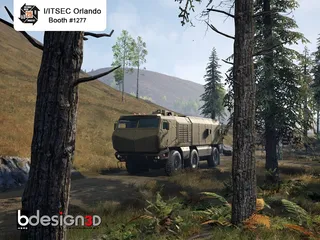Ukraine Advances AI-Driven Autonomous Systems
Contact Our Team
For more information about how Halldale can add value to your marketing and promotional campaigns or to discuss event exhibitor and sponsorship opportunities, contact our team to find out more
The Americas -
holly.foster@halldale.com
Rest of World -
jeremy@halldale.com
.jpg/r%5Bwidth%5D=320/f6c16460-266f-11f0-8743-b7a36e0c7829-ukraine-7862274_1280%20(1).webp)
Ukraine's military has made significant strides in developing and deploying AI-enabled unmanned systems, according to a new research paper examining the technological evolution of warfare amid the ongoing conflict and growing calls for a ceasefire.
The study by Kateryna Bondar, Fellow, Wadhwani AI Center and published at the Centre For Strategic and International Studies reveals how Ukraine has successfully implemented partial autonomy across various platforms whilst maintaining critical human oversight in engagement decisions.
The research highlights Ukraine's strategic objective to remove warfighters from direct combat situations, replacing them with increasingly autonomous unmanned systems.
This approach addresses two critical challenges: preserving Ukraine's limited human resources and overcoming inherent human limitations such as fatigue, stress, and information processing capacity.
Training Implications
Whilst full autonomy remains aspirational rather than operational, Bondar states, Ukrainian forces are achieving remarkable results with partially autonomous systems. AI-enhanced target recognition systems can now identify targets up to 2km away in optimal conditions, substantially extending the previous 300-metre range. These systems effectively counter camouflage and decoys that might deceive human operators.
Drones equipped with AI navigation capabilities show a dramatic improvement in mission success rates—from 10-20% to 70-80%—by eliminating dependence on continuous manual control and stable communications. Ukraine has widely adopted small and medium first-person-view (FPV) drones with modular designs, allowing quick reconfiguration for various missions by swapping components.
Perhaps most significant for military training professionals is the dramatic reduction in required training time. Systems with autonomous features can now be mastered in as little as 30 minutes to one day, compared to the extensive flight hours previously needed.
Ukrainian training institutions have adapted their curricula to integrate both manual and AI-assisted functionalities, with many operators mastering autonomous modes in under a day. This accelerated learning curve has expanded the pool of qualified operators and bolstered overall operational readiness.
Read The Research PaperStrategic Approach
Rather than pursuing large, comprehensive AI models, Ukrainian developers are focusing on smaller, specialised models trained on limited datasets, the study showed. This approach enables efficient onboard processing on inexpensive chips that can be quickly updated and upgraded as battlefield conditions evolve.
Ukrainian engineers are leveraging open-source technologies and existing computer vision models to accelerate development whilst keeping costs low. By encrypting onboard AI software, Ukraine maintains a technological edge that is difficult for adversaries to reverse engineer. In 2024, Ukrainian forces began purchasing 10,000 AI-enhanced drones, representing a small but significant portion of the nearly 2 million drones produced that year.
Human Oversight
The paper identifies extending autonomous capabilities to ground, sea, and undersea platforms and enabling true swarm operations for aerial systems as significant challenges ahead. Whilst autonomous navigation shows promise for ground systems, practical implementation remains largely unexplored by Ukrainian defence companies. Aerial swarms currently exist only in small-scale experiments, with fully realised swarms requiring substantial further development.
Despite the push towards greater autonomy, human oversight remains pivotal—particularly for engagement decisions. The current human-in-the-loop approach may eventually shift towards higher-level supervision, but critical ethical and strategic judgements remain firmly under human control.
The research underscores how Ukraine's necessity-driven innovation is rapidly advancing the practical application of autonomous systems in modern warfare, potentially reshaping military training and operational doctrine worldwide. As international diplomatic efforts intensify toward negotiating a potential ceasefire, these technological developments highlight the evolving nature of modern conflict and may influence the terms of any future peace arrangements.


